Ask the Director: Keith Maitland on “Tower,” SXSW Documentary Grand Jury Winner
On August 1st, 1966, a sniper rode the elevator to the top floor of the University of Texas Tower and opened fire, killing 16, wounding three dozen and shocking a nation that had yet to experience mass school shootings as a too-common event. 50 years later, combining archival footage with rotoscopic animation to create a personal experience, Tower (2016) follows the true stories of the witnesses, heroes and survivors of America’s first mass school shooting.
At SXSW 2016, where Tower took home three awards (the Documentary Feature Audience Award, the Documentary Feature Grand Jury Award and the Louis Black “Lone Star” Award), ScreenPrism spoke to director Keith Maitland about the choice to use animation, the true events that motivated him and whether films about gun violence can rise about the noise in our polarized national debate.
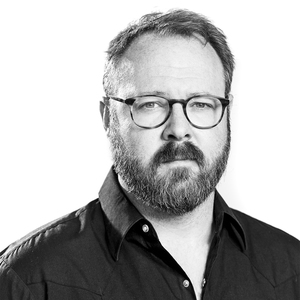
Keith Maitland
ScreenPrism: You’ve been working on the film for four years?
Keith Maitland: There was this article that came out in Texas Monthly in 2006, which was the 40th anniversary. And literally, while I was reading the article, images that you saw today were in my brain. Fortunately, my wife is a photographer for Texas Monthly, so I knew the writer socially. And I took the writer of the article [Pamela Colloff] out to lunch, and I said, “You know, I think that this can make an incredible film.” I love the way that she approached it as an ensemble oral history. I wanted to take that and build on that visually. And I had worked in animation on my last documentary [The Eyes of Me (2008)] as a tool to transcend the standard documentary approach. And so immediately I was drawn to the idea of making an animated film. I found all this great archival footage on YouTube, so I knew that there was this great footage, and it was all black-and-white. So I said, “Okay. We’ll do a black-and-white animation.” When you look at the footage on YouTube, there are these great wide shots of all these things happening because the cameraman smartly are undercover shooting what’s happening over there. And I said, “All we need to do is bridge what’s happening from their perspective with close-ups of the real people.” And because the article revealed who some of the real people were, I had a place to start.
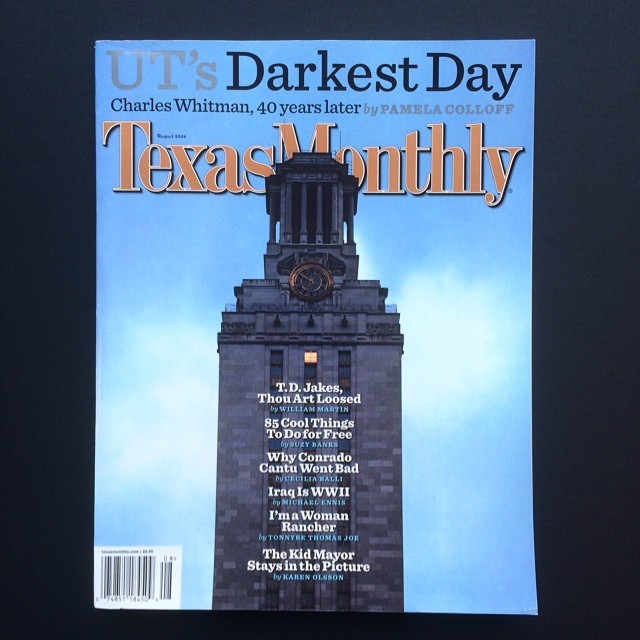
So that was in 2006. I was pretty deep into the other documentary at that point. I was like, “I want to do this but I’m not going to be able to do it anytime soon.” And at that time Pamela Colloff, the writer who did the original article, said, “I worked on this article for six months, and it takes you to some really dark places. And if you are looking to invest four years of your life into this story, you really need to think about: do you want to spend four years in these dark places?” So I spent that ensuing six years thinking about that. And so every couple months, you know — I’m a filmmaker, a lot of my friends are filmmakers, people say, “Oh, what are you doing next?” And I say, “Well, I have this idea.” And I’d watch people’s faces, and I gaged the reaction. But I noticed every time I talked about it, I got more interested, and the more interested I got, the more interested they seemed. And I said, “Okay, I do have the passion to sustain this for four years.” And so I set a clock and said, “A decision has to be made in 2012.” Because the 50th anniversary is in 2016, and I decided it in December of 2012, so really, at this point, it’s been just under three-and-a-half years.
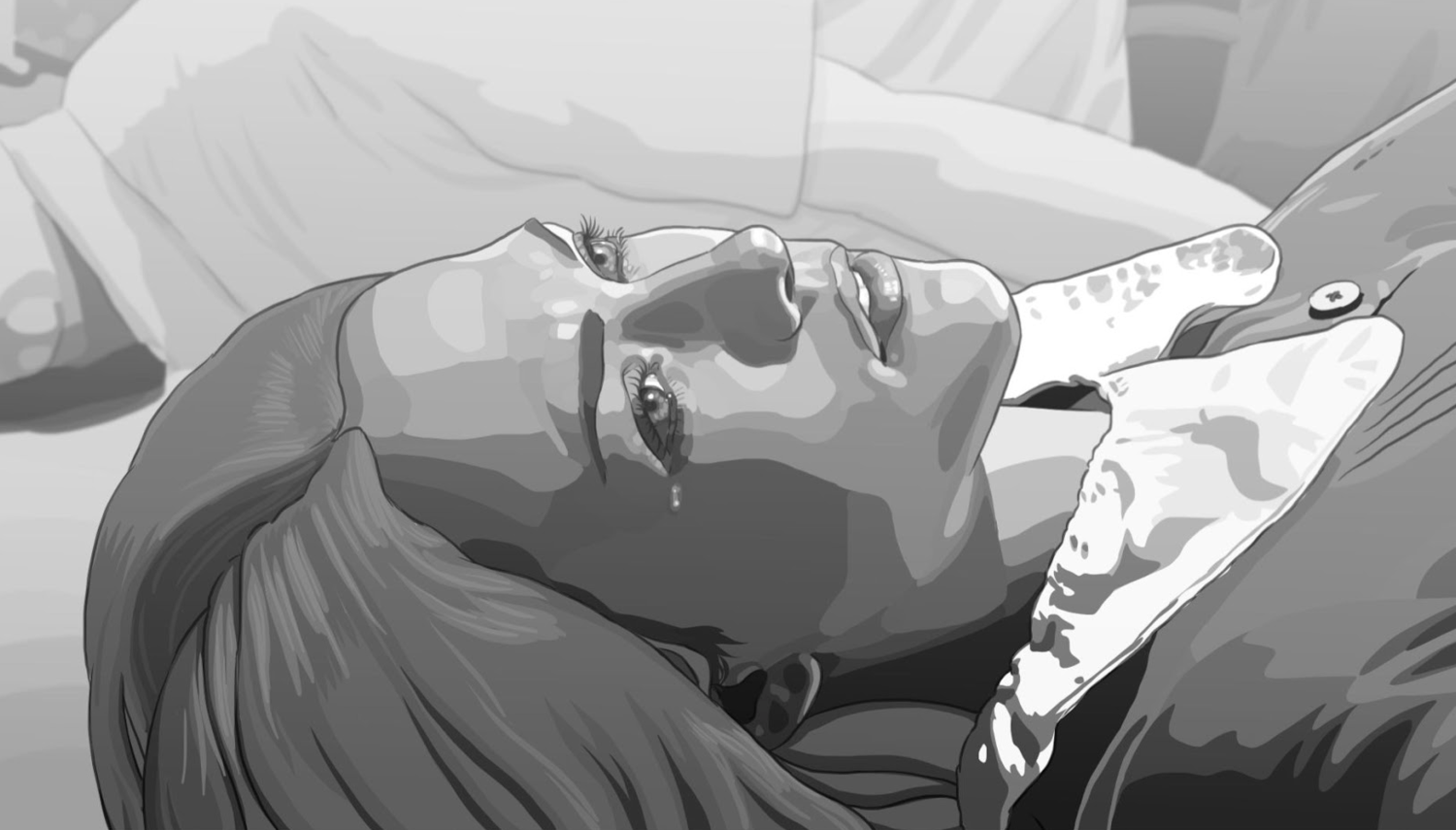
Tower (2016)
SP: The rotoscoping animation feels very intimate, very personal, like you’re there with the characters. People haven’t seen this kind of story told in this way before. How did you make the decision to use the rotoscoping?
KM: My previous film is called The Eyes of Me (2008). It’s a year in the life of four blind teenagers. And we used the same style of animation, a different animator but the same style, to basically dive into their questions of perception. They all had sight and then lost it. So they could talk about what they used to see and then how they perceive the world now, and it was a great tool. And I realized in working with them — you said the word “intimate.” People said this to me over and over, producers that I pitch this to, companies, they say, “Oh, you know, this needs to be a personal story. And by animating it, you’re just going to keep the audience at arms-length.” I said, “No. I know from my own experience, animation allows us to get closer. You can’t stick a camera in somebody’s eyeball and make the audience feel comfortable with live action. But in animation, it has a dream-like quality that allows you to go into a different place of your understanding.”
We didn’t get really tricky with the animation, and that’s because there were a lot of different visual elements to the story and a lot of emotional elements to the story. But I knew that it would allow for intimacy. But beyond that and what was most important to me was that there is a version of this film that could have been made that is talking to a bunch of 70 year-olds about what happened to them when they were 20 year-olds, and it would be, I think, informative and enlightening to other 70 year-olds and to 50 year-olds and to 30 year-olds who appreciate documentary.
But I really wanted the film to speak to 16 year-olds and 20 year-olds because they are the ones who, every day, they put their backpack on, they go to school, and they live under the threat of what these kids went through. So I wanted to show them as kids, and I wanted to do it for a prolonged period of time. I knew that we were going to wait an hour before we ever showed the real people. Because I just want the kids who see this film, high school kids, college kids to see themselves up there in the screen. And I want them to get as engrossed as they can before then revealing the real people. And ideally people are engrossed enough in the actor portrayals and the animation that the transfer to the real people feels like a seamless quality.
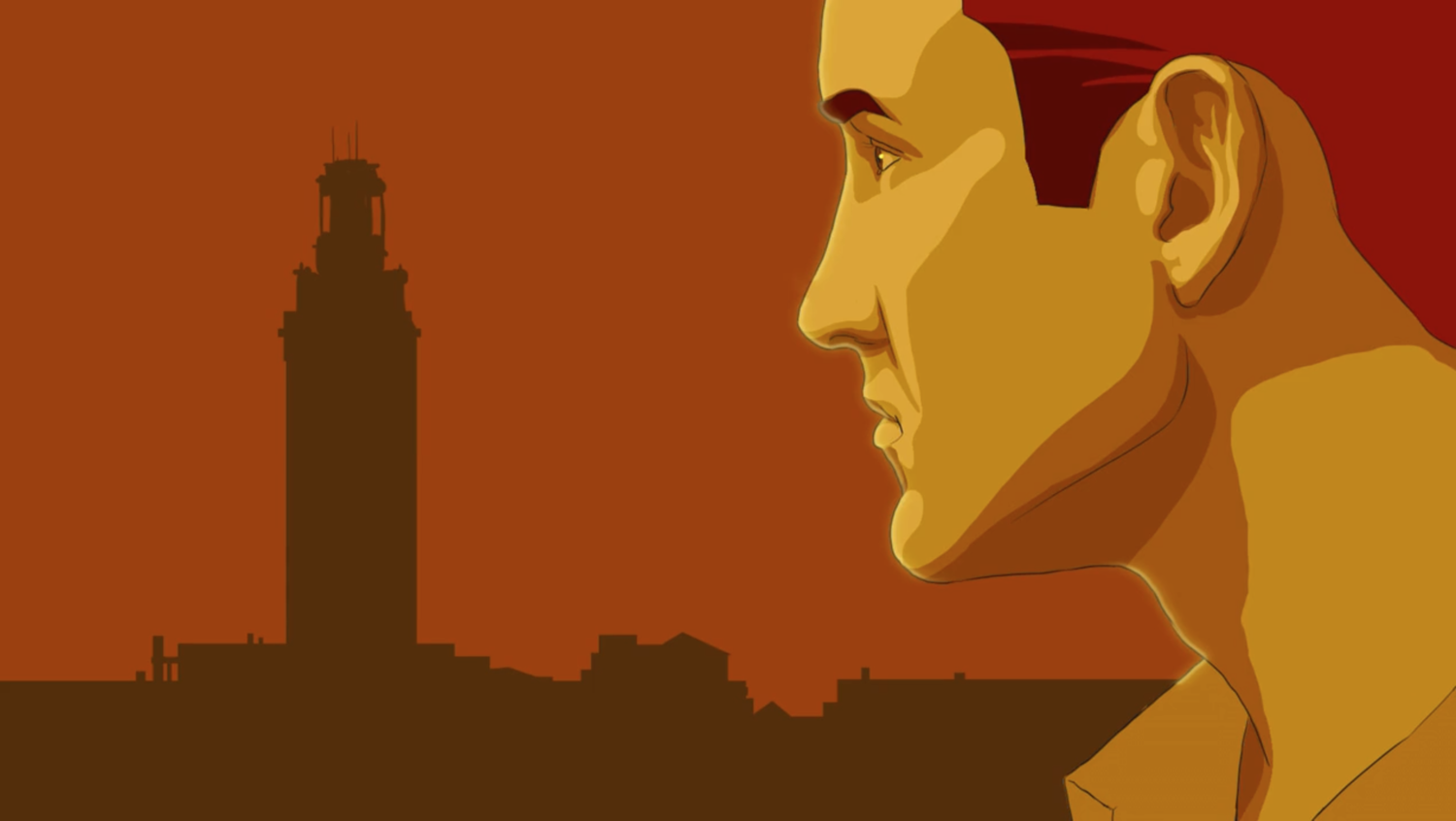
Tower (2016)
SP: The style of animation, rotoscoping, feels particularly intimate because it’s based on the live actors’ performances.
KM: Absolutely. And the actors are incredible. People don’t talk about casting in documentary, but casting is just as important in documentary both for your real subjects [and for your actors]. The people that you choose to put on camera have to be compelling, and they have to have something to say whether on the surface or within them that bubbles out. And so I met all these people, and I did all the interviews with all the real people for a year before we ever went to casting the actors who play them. And then I went into casting looking for actors that could — not mimic these real people because I never knew this real people as teenagers — but I imagined what they might be like based on who they are now.
And for me, the most important casting was Claire because so much of the movie begins and ends with her. Her story is so stirring, and it drew me in from the article. It drew me in when I met Claire. And so we looked at so many actresses. Over 30 came and read for it. We had a very small budget for casting. Our casting agent was wonderful. But all the young women that came to read, nobody kind of captured the dynamic quality of the real Claire, which is that she lived through this tragedy, and yet she’s somehow so optimistic. There’s a sweetness, and she takes this tragic moment and manages to credit other people who kept her alive. And even her approach to her relationship to the sniper [is forgiving].
So I was looking for actors who had a dynamic special something, and so we finished casting and I didn’t have our Claire. And finally, I pushed the casting agent and said, “I can’t settle on this character.” We went back into her archives, and Violett Beane was a 17 year-old high school senior. And she had read for a part in a Jason Reitman film, and I watched a video of her previous audition. She couldn’t have been more different than the role she played. But she jumped off the screen to me. So we brought her in, and I was thrilled. She brought so much naturally in, and when I asked for some small adjustments, her reactions were priceless. She’s got it.
And as a filmmaker, documentary or narrative, when you see somebody that has the thing that jumps through the camera onto the screen naturally, you try to grab it. And the fact that she was also a pretty good visual match for young Claire — it was a no-brainer. And I’m thrilled. It’s one of my favorite parts of the film, as a filmmaker, outside of all the touchy-feely emotional stuff with the film, is that Violett was a 17 year-old high school senior, and today, she is on CW’s The Flash — she’s a superhero on the CW. She just cast a few months ago. So this is the only screening she gets to go to because she has to fly back to Vancouver for her TV show tomorrow.
Finally, today [at the SXSW premiere] was the very first day Claire and Violett ever met. And I just saw it between them — they had an immediate connection. I knew they would because they’re both thoughtful and warm and wonderful people.
SP: When you talk about casting and the directing actors, that emphasizes how the line between documentary and narrative film is becoming less defined. Your film is a hybrid in a lot of ways. Are you excited that documentary is starting to use more tools traditionally reserved for fiction?
KM: I’m not a big fan of putting labels on things. And when I applied to the festival, Janet [Pierson, Head of SXSW Film] called me after seeing the film. And she said, “What category do you see this film playing in?” And I said, “I don’t know. Documentary? Hopefully, maybe in competition.” And she said, “Well, if you want to call it a documentary, we can.” She’s like, “I don’t know exactly what to call it. But I want to have it at the festival.” I said, one, “Thank you.” And two, I’m not a big fan of labels. I started out as a creative writer. I write screenplays. I’ve directed narrative shorts. I’ve never done a narrative feature. I’ve made three documentary features. But when I think about filmmaking, the earliest days, the very earliest films were started as neither documentary or narrative, but they were capturing life as it unfolded. And then filmmakers started tweaking the reality that they were [previously] just capturing, where there’s a Parisian street scene or recreating life in the Arctic. There was a mixture of what was real and what was created with the goal of communicating something to an audience. And that’s how I look at it. I do want to do a narrative film in addition to documentary. I don’t see myself ever stopping doing documentary, but I’d be very happy to walk through the relationship with this film and others without worrying about that.
SP: Audiences are also becoming more savvy and more accepting of films not belonging to a strict category.
KM: The greatest compliment that can be paid to any filmmaker or any artist is capturing any kind of truth. And the greatest fictions we’ve all grown up on are steeped in truth. And we certainly all know incredible documentaries that have manipulated truth greatly but still communicated something, so for this where we drew a line was every line in the movie uttered by these actors portraying these real people was uttered by these real people.
I didn’t write it. There’s a script, but the script came from the interviews that we did. And for the two main characters who passed away before I had a chance to work with them, I was able to get my hands on either letters that they’d written, police reports they’d filed, or even filmed interviews. Houston McCoy, the police officer on the green screen, he passed away literally within days of me deciding to make this film. And it was such a tremendous loss because his story needs to be told. I have a huge affinity for that character, for what that man went through in his life.
Thankfully, I was able to work with his family, and they were wisely smart enough to commission that interview before he passed away, realizing his story need to be captured. And I’m thrilled to be able to include it.
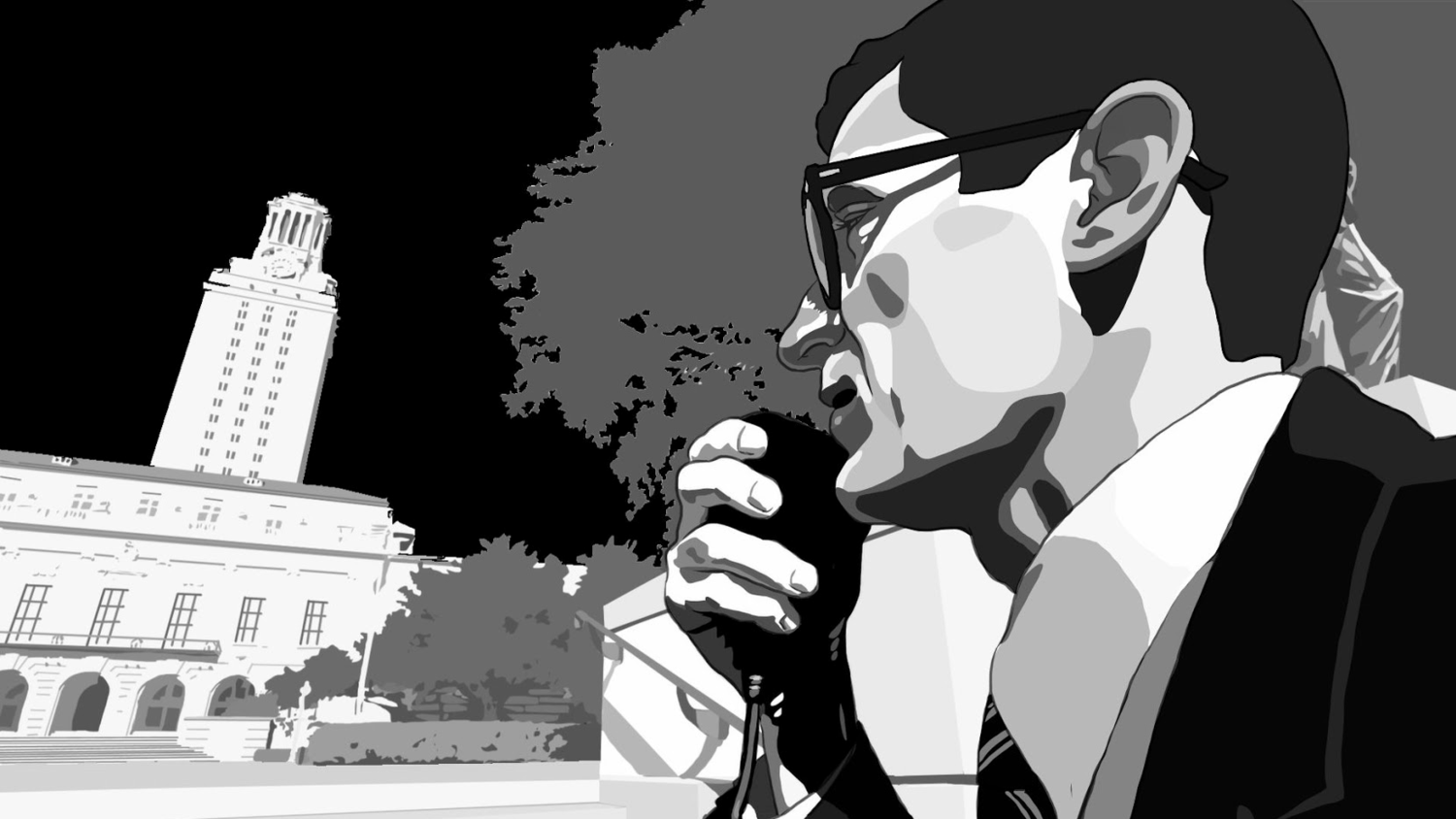
Tower (2106)
SP: Is this the earliest school shooting in American history?
KM: There are a lot of different ways to narrowly parse that. We say that this is the first American mass school shooting. There are other shootings in schools that didn’t have even remotely the toll, the number. A lot of the shootings that happened [in schools] before this in the 1800s and the early 20th century are really crimes of passion. It’s an angry disgruntled employee or an angry jilted lover or a teacher or a parent of the student who kind of loses it. And what really separated this story for me is that, the sniper, his actions affected totally random people. There’s no emotional connection between him and the individuals that he harmed. And that’s what we see in a lot of the [contemporary] shootings: Newtown, for example. There’s pretty much no connection between that shooter and those little kids that suffered at his hands.
But, again, you can parse it all different ways. To me, it kind of doesn’t matter. This is the one that captivated a nation’s attention — probably for a lot of reasons, the biggest one most likely is the media reporting on it. Kennedy had just been killed three years previously, and that opened news media around the country’s eyes to telling a story quickly because it impacted so many people. And so when this happened, Neal Spelce, the reporter who hopped in a car and went down there, his radio broadcast started getting picked up and carried.
The visual of the tower was broadcast by what became the local PBS stations before PBS existed. But the local PBS station, the educational TV station, rolled two studio cameras that are for shooting studio news out onto a balcony, and they ducktaped a film telephoto lens and pointed it at the top of the tower. Now, footage in the film, anytime the camera is stable looking at the top of the tower, and that broadcast got picked up and carried around the country. And people have reported back to me, “I was in New York City. I was in Wyoming. Arkansas.” They tuned in. They heard it on the radio. They turned on the TV. And the nation was transfixed. I do believe it’s the very first time a breaking news story was carried live as it was unfolding of this kind. It’s because it lasted so long.
SP: How does that make you feel that, 50 years later, school shootings are on the news almost every day or sometimes not even reported as breaking news because we’re so used to them?
KM: The character, the real life man in the movie, Artly Fox says, “People are now inured to this happening every day.” I feel the same way, and it’s one of the main reasons I made the film. If this was just a one-off event that had never been repeated, it merits documentation, and it merits closer look. But it wouldn’t have driven to me to make this film. I made this film because I’m so frustrated when I turn on the news and I see this. And I’m inured to it.
And I thought about these kids. I think about them all the time. Our parent’s generation grew up during the Cold War where they lived under threat of nuclear annihilation. And they’d do these drills where they get under the table — we’ve all seen the videos. Obviously, if a nuclear bomb drops, sitting under your desk isn’t going to make a difference. But they felt powerless. You can’t figure out how much damage that caused to the psyches of people in that generation to live under that threat.
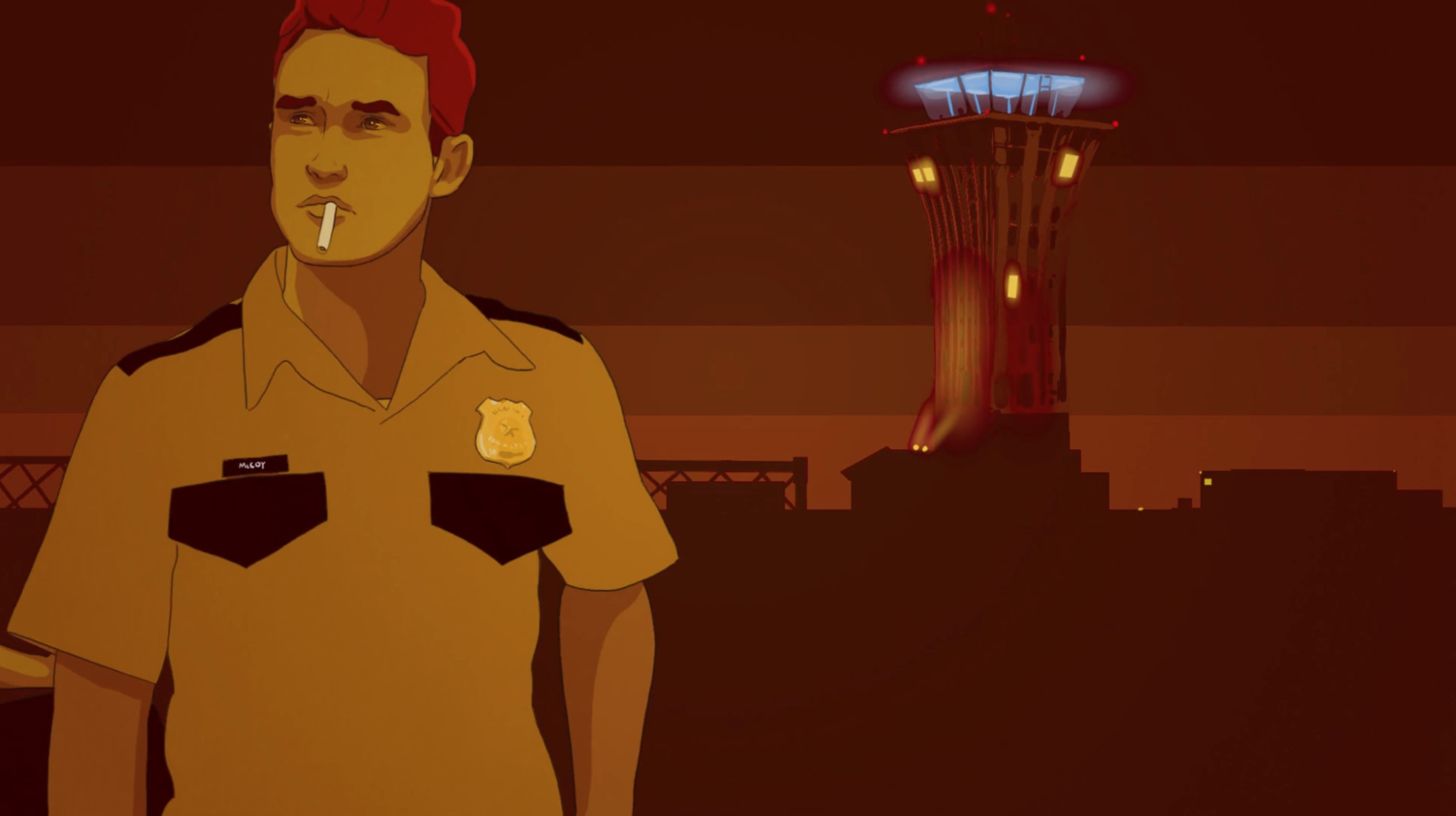
Tower (2016)
Well, kids today live under the threat of the school shooting. And there are schools here in Austin that drill for what happens if there’s an active shooter scenario. And that is a change. When I was in college 20 years ago, I went to the University of Texas. I knew that the tower shooting had happened. I was on campus. But we didn’t question whether it was a possibility. And today, I think every high school student, every college student knows that there is always a possibility that that happens. And they have systems in place to send mass text messages to everybody. And we’re learning more and more about the best way to [respond]. Recently, I was talking to somebody who was like, “If there’s a shooter, I used to think, Run for your life. And now they say, No. Do what Martinez and McCoy did and throw yourself at the person. Grab your bag and throw it in their face because you can’t outrun a bullet.”
SP: The debate over gun control is so polarized in our country. Some people are deeply committed to this belief that they want their guns, and they want to put guns into schools. With a personal film like Tower, how do you rise above that noise and these extreme positions that are entrenched in our culture?
KM: To be honest with you, I don’t know. I hope that the film sparks a dialogue and that conversations arise. I hope those however many people who were in that room [at the SXSW premiere] are off at lunch right now talking about that. And some of those people are smarter than me and may see a path forward that gets us to a place where that sort of question doesn’t need to be asked. I’m glad you’re asking that question. I don’t have the answer. But I hope that the film engages people to find an answer.

